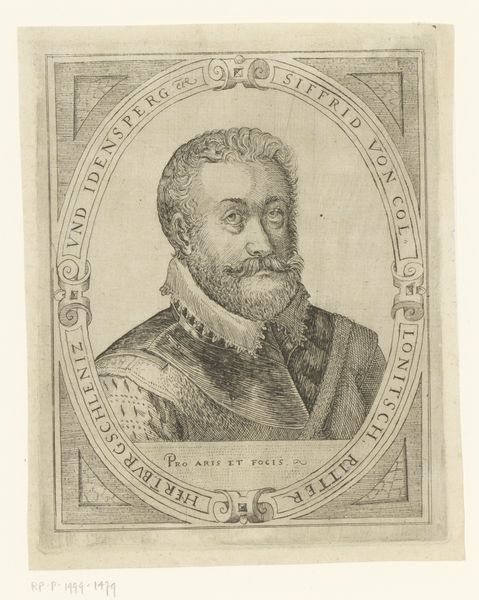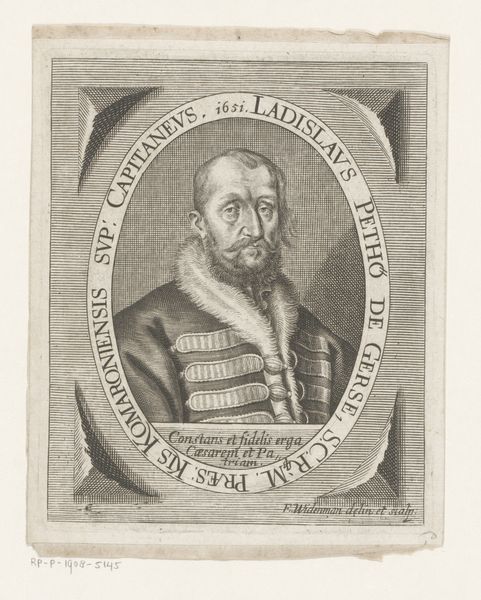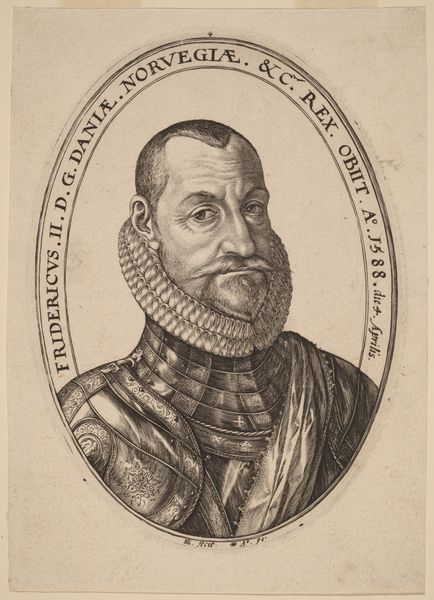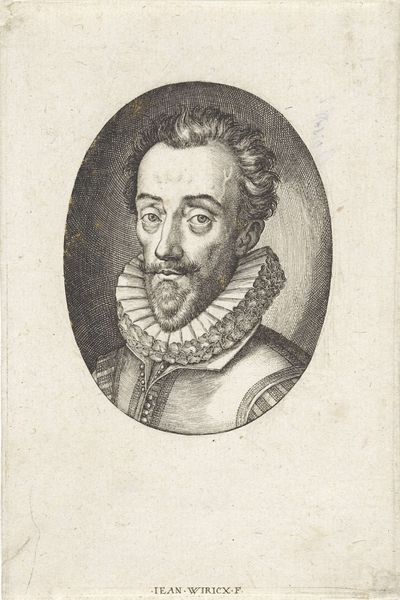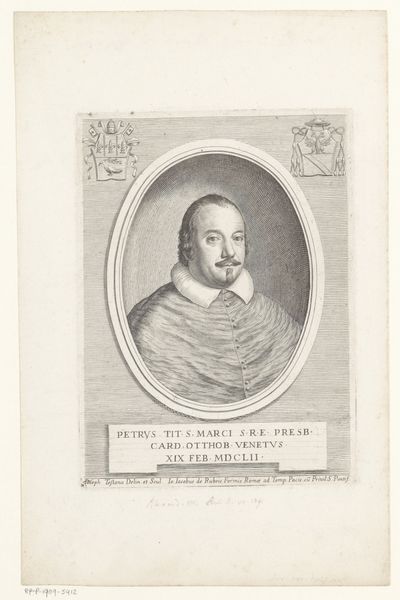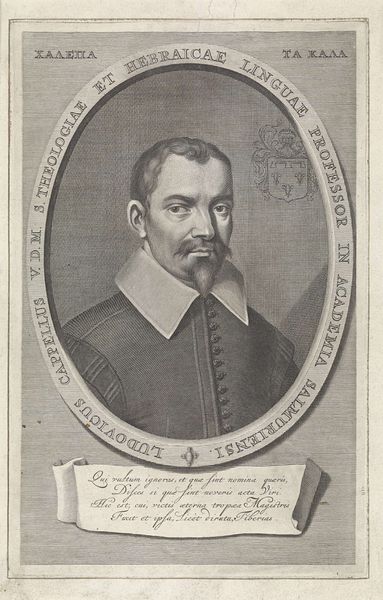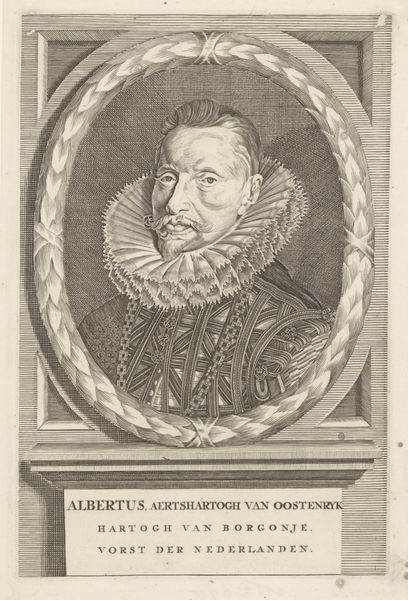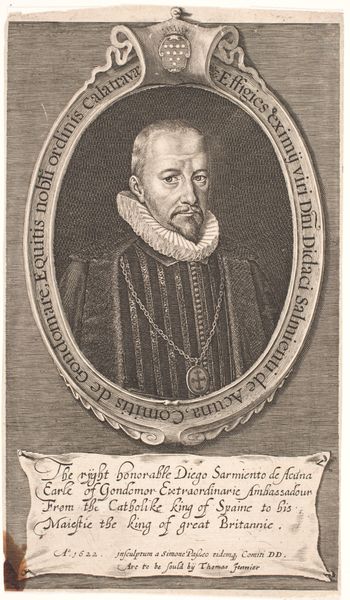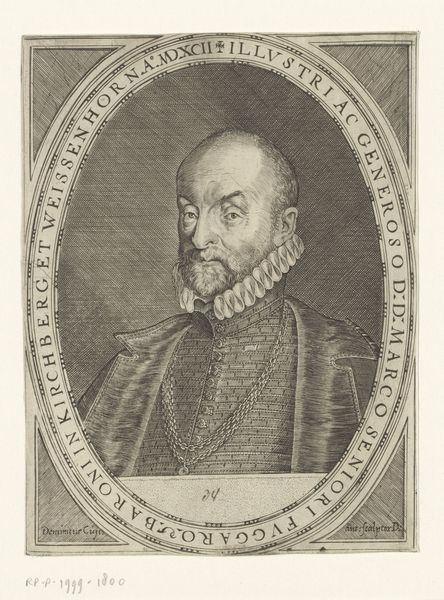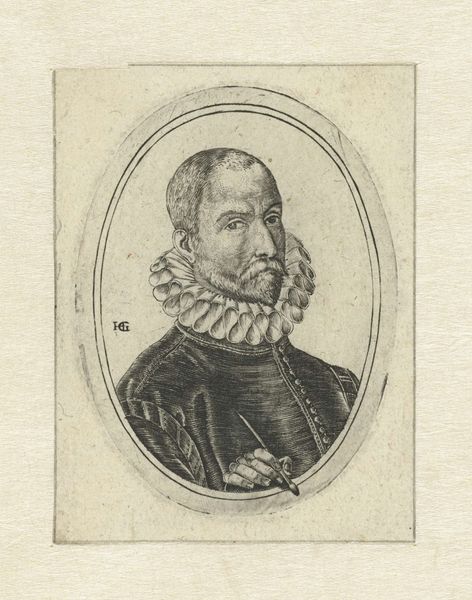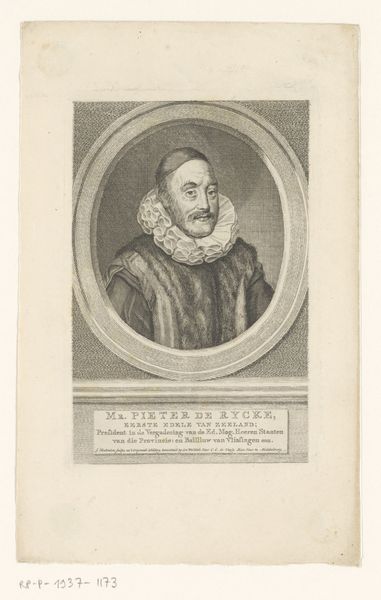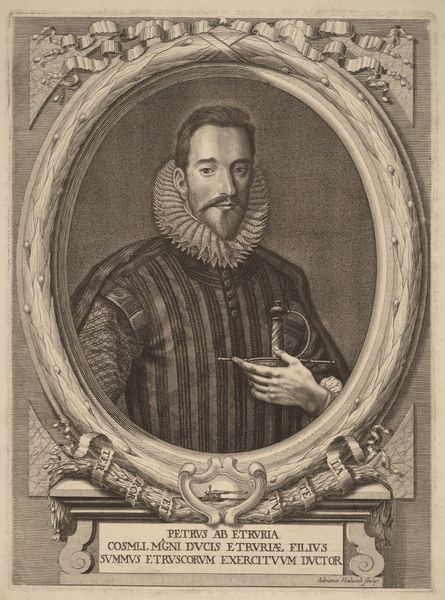
engraving
#
portrait
#
baroque
#
old engraving style
#
history-painting
#
engraving
Dimensions: height 164 mm, width 113 mm
Copyright: Rijks Museum: Open Domain
Curator: Let’s turn our attention to this Baroque engraving from around 1750, a portrait by J. Verkruys, titled "Portret van liedschrijver Agnolo Divizio da Bibbiena", or Portrait of the songwriter Agnolo Divizio da Bibbiena. Editor: What strikes me immediately is the texture! The lines create such depth, especially in the face and that amazing ruffled collar. It feels almost sculptural. Curator: The engraving process itself is key to understanding this. Think about the labor involved – meticulously carving those lines into a metal plate. This isn't just about representation; it’s about transforming material to create a lasting image. It shows how widely used prints have been in the documentation of relevant personas from various domains throughout the 1700s. Editor: It really is incredible, thinking about the hand that guided the tool to achieve such delicate detail. And beyond just craft, you get a sense of the man himself—a serious demeanor, maybe a bit melancholy. Curator: It's a carefully constructed image. Note how the oval frame and the inscription below create a sense of formality. The engraver used these conventions to position Agnolo Divizio da Bibbiena within a specific cultural and historical context. These portraits served as both records and assertions of status. Editor: Yes, there is also an intriguing tension between the objective formality and that little human vulnerability peeking through. It’s the tiny mole on his face, for example; those little imperfections remind you it’s a person, not just a symbol. I can feel the pulse and passions from Agnolo. Curator: The dissemination of this image speaks to the growing importance of print culture and the commodification of fame. Reproducing an artwork for consumption transformed it in relation to those accessing its image. The work enabled patrons who did not commission work or were never physically exposed to a Baroque environment to connect with its historical context, which certainly influenced later developments. Editor: Looking closely makes me appreciate the humanity in something so meticulously crafted. What initially seemed formal and distant now feels deeply personal, thanks to this dialogue we had. Curator: Indeed. It invites a new connection with Baroque visual arts as more than decorative or stylistic expression, instead promoting discussion around the period's complex interactions of labor, identity, and cultural dissemination.
Comments
No comments
Be the first to comment and join the conversation on the ultimate creative platform.
